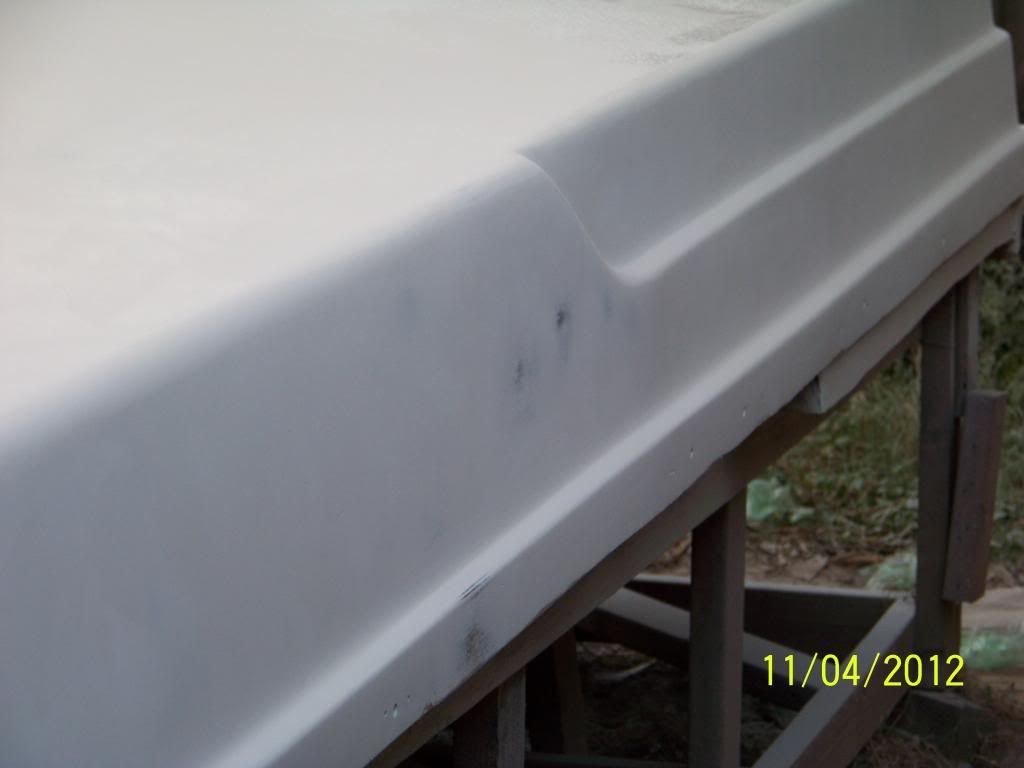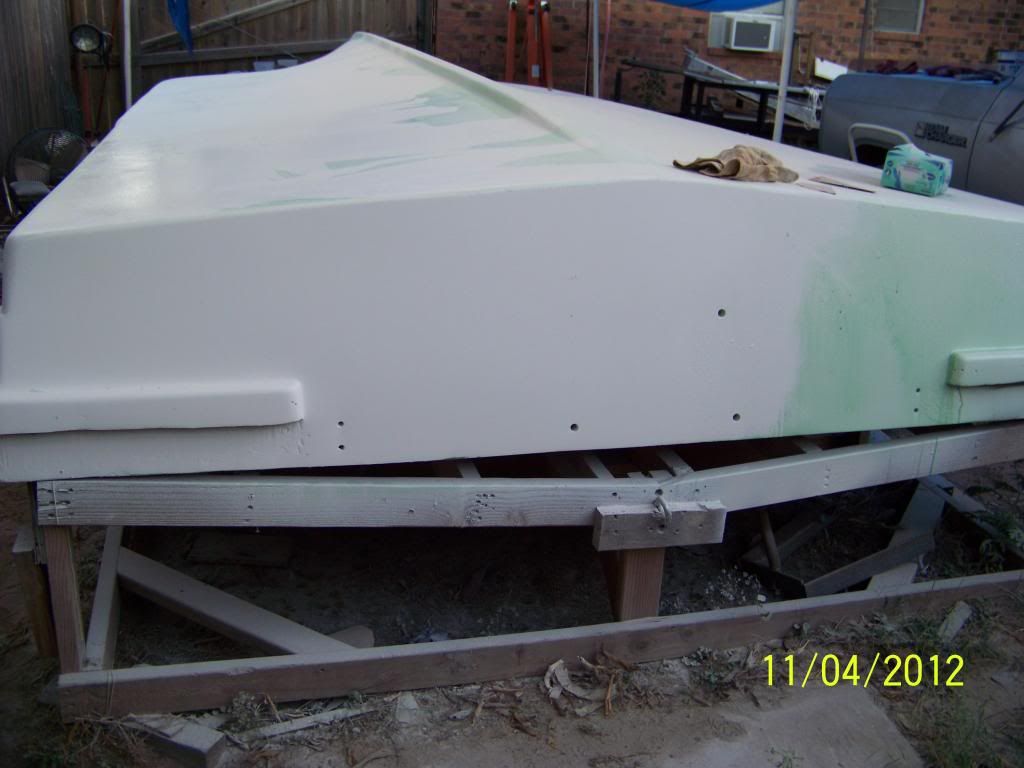Re: 1983 Deck Boat Transom/deck/stringer replacement Help
Ok now that I have sprayed half the boat and sanded allmost half of that, this is what I think.
First the Sharpe spray gun has a 1.8 mil tip. With the pressure pot @ 15 psi and the gun with 40 to 60 psi I could spray way more fuild than the air could atomize.
Spraying the gel coat without any reducer will work but the gun has to be setup correctly. Too much gel and you get a really bad orange peel. When slowing the gel flow you can get a fairly nice spray, but it is a thin coat. (This is what YD meant about 4 passes) Gel coat will NOT flow out like paint. What you see is what you get when spraying.
I tried to spray with a heavy coat. I knew I could not spray 20 mil in one coat after the first minute of spraying.
By spraying so heavy I had alot of orange peel. This caused an uneven coat and made it harder to sand.
I also had a few places that I sanded through. This also causes you to have to sand alot more gel coat off to get the gel coat smoth. Alot of wasted gel.
Orange peel.
Where I sanded through.
I am still not sure about reducing the gel coat. But I did not like how the first spray turned out.
I bought my gel from US Composites and spoke with a man there and he said I should reduce with styrene @ 5 to 10%.
When I ask about the yellowing effect, He said if the styrene was old it may cause this, but their gel and styrene are all made by them and or new.
I think on my next spray I will try the styrene and see how it goes. If it helps get a better spray and I can put down 4 coats then it will be worth the chance. I also think if the maintenace is keep up. wash, polish and wax it could slow down the yellowing effect.
I think I'm going to reshoot the side of the hull again because of the sanding through.
I was under the impression that the gel would hide more defects than it actually will. I had a few places that need more prep. I also found several pinholes that I didn't see before starting to spray. The pinholes will not fill in when spraying. I read somewhere that you can use a roller or paint brush on these type problem areas first to fill in the pinholes and then spray. Maybe one of the more experienced gentlemen will have a better ideal on this.
I was spraying 1 quart at a time. The directions said to use 2oz mekp per 1 gallon of gel. I use just under 1/2oz mekp per quart.
I set a timer with 15 minutes on it. I could spray the quart in 10 minutes and gave me 5 minutes to clean the pot and gun. I didn't have any trouble with the gel kicking off in the gun.
The PVA is very interresting to use. It is water based and is easy to clean your spray equipment. Its a no brainer to spray. Just put a lite mist on first and hold the gun around 20" away from what your spraying. Let dry for 10 to 15 minutes and spray a heavy coat on. Should be about 2 to 4 mils thick.
The man at US Composites said I had about 1 hour window to spray on the PVA after the gel was sprayed. Told me to not spray it on with the gel coat still wet. Should be abe to touch the gel without leaving a finger print in the gel.
When I went out today I started to remove the PVA with some hot water and a rag. This worked very well. As I was sanding I noticed that the PVA was like a thin sheet of plastic. It would start to peel up. So I peeled the majority of it of and didn't use the water. I thought that was kinds cool. I also used a air blow gun and put it right against the hull and it blew off alot of the PVA.
I had no trouble sanding the gel coat. I used 180 grit on the DA and had no problem with it gumming the paper. I read in OOP's thread he was having this problem.
Have a few videos but have not yet down loaded them yet. Not sure if ya'll are ready to see this old man.
BTW I will turn 60 on next Tuesday. Who would have thunk I'd be doing something like this at 60!!!



























